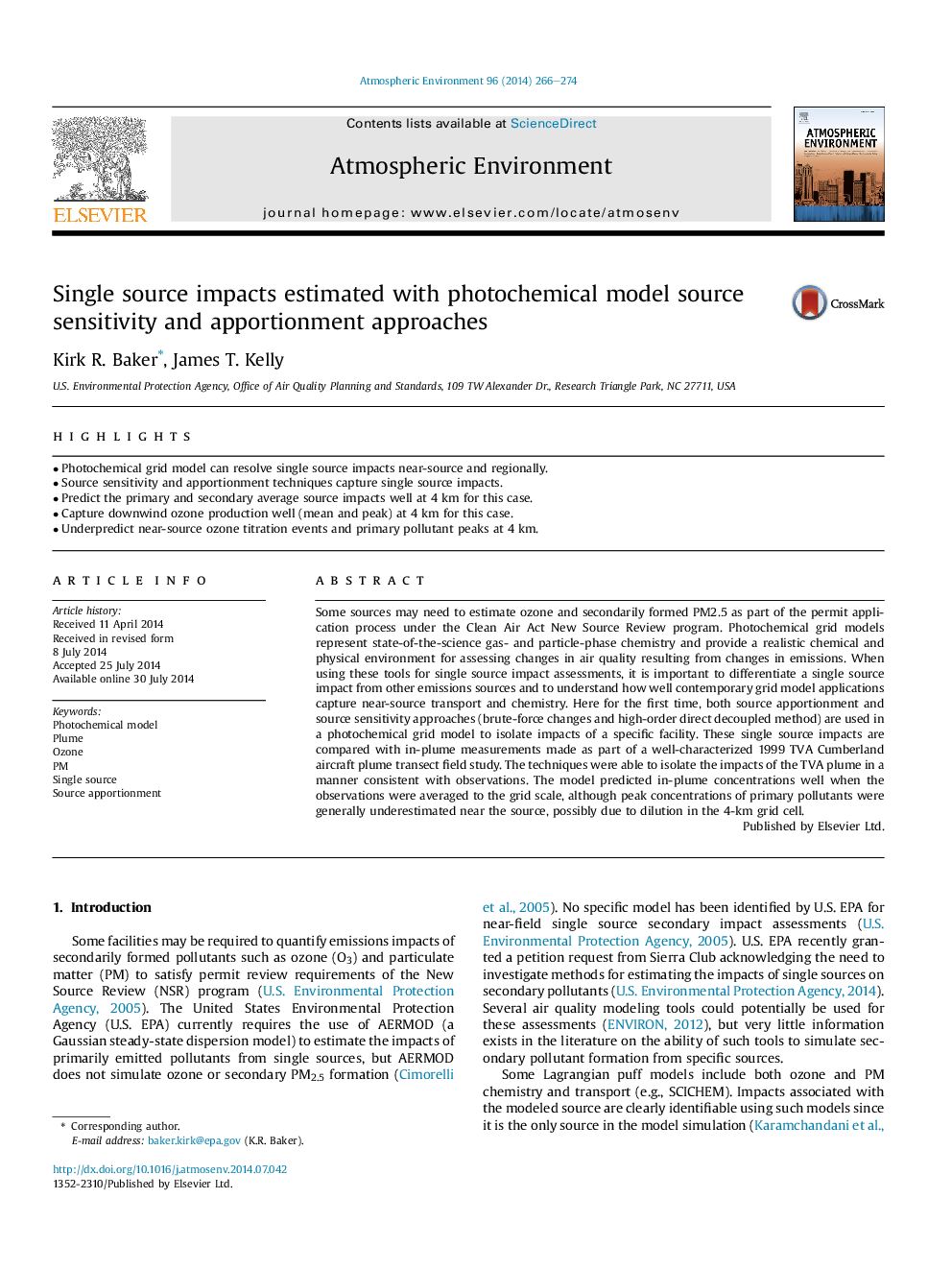| Article ID | Journal | Published Year | Pages | File Type |
|---|---|---|---|---|
| 6339949 | Atmospheric Environment | 2014 | 9 Pages |
Abstract
Some sources may need to estimate ozone and secondarily formed PM2.5 as part of the permit application process under the Clean Air Act New Source Review program. Photochemical grid models represent state-of-the-science gas- and particle-phase chemistry and provide a realistic chemical and physical environment for assessing changes in air quality resulting from changes in emissions. When using these tools for single source impact assessments, it is important to differentiate a single source impact from other emissions sources and to understand how well contemporary grid model applications capture near-source transport and chemistry. Here for the first time, both source apportionment and source sensitivity approaches (brute-force changes and high-order direct decoupled method) are used in a photochemical grid model to isolate impacts of a specific facility. These single source impacts are compared with in-plume measurements made as part of a well-characterized 1999 TVA Cumberland aircraft plume transect field study. The techniques were able to isolate the impacts of the TVA plume in a manner consistent with observations. The model predicted in-plume concentrations well when the observations were averaged to the grid scale, although peak concentrations of primary pollutants were generally underestimated near the source, possibly due to dilution in the 4-km grid cell.
Related Topics
Physical Sciences and Engineering
Earth and Planetary Sciences
Atmospheric Science
Authors
Kirk R. Baker, James T. Kelly,
